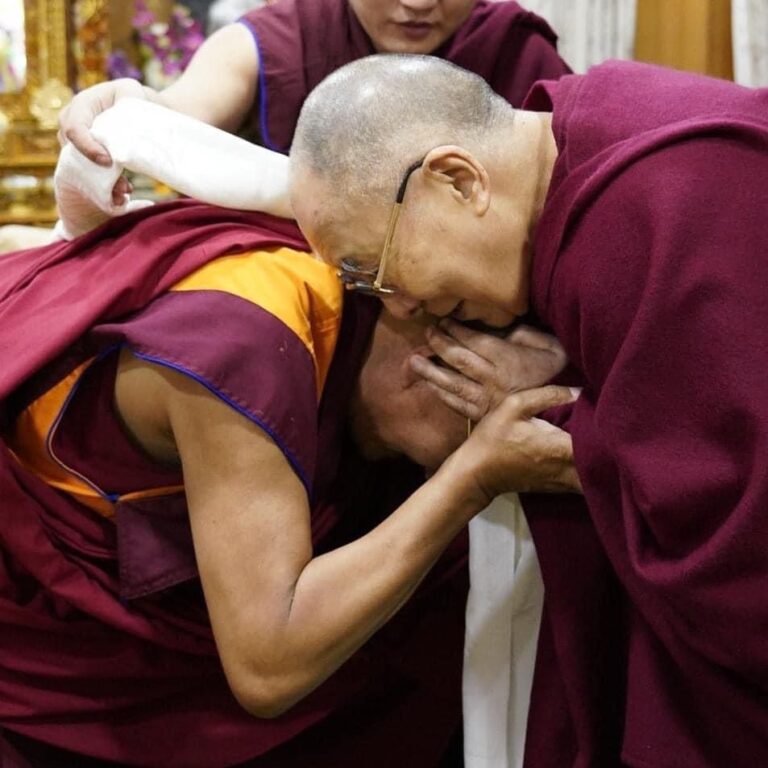A Work Telling the Life and Liberation Story of the Great Master Padmākara.
Part 9 When they reached the border of central Tibet, the local spirit Gangkar fled in terror. Arriving in Nam, the Master said, “Now I need to sort out Thanglha,” and set off in his direction. Taking a copper pot, he cooked up a brew of dead sheep and donkeys. A man from Lutsa asked, “What is this?” Upon hearing the Master’s explanation, he said, “Ha! Ha! Look at how you subdue a yakṣa!” “Great yakṣa,” said the Master, “Please accept this foul-smelling meat!” And he kicked the pot, tipping it over. At that, the yakṣa Thanglha erupted in fury, sending thunder roaring across the glacier. Black clouds loomed and thunder, hail, and lightning crashed, crackled and stormed with a fury almost unbearable to the humans there. At this, the Master pointed at the mountain with the threatening mudrā and most of the glacier melted. From then on, the mountain was known as Thanglha Yarshu, ‘Thanglha Melted Above’. At Nying Drung, he said, “Here lives a vicious nāga who does not allow the practice of Dharma.” The moment he thought about taming the nāga, it fled to the furthest ocean. The Master then went into a cave, constructed five maṇḍalas, and spent three days and nights in meditation. As he did this, the thunder on the mountain subsided and the land became peaceful once again. The nāga and Thanglha were bound under oath and converted to the Dharma. He subdued countless gods and demons at this time, including those that lived in Lake Manasarovar and those whose abodes were on Mount Everest. Arriving at Leshö, the Master said, “Penyü is a bad place; its red valley looks like an opened-up a horse’s corpse”. Without actually going there, he bound under oath its gods and demons. Then he went down through Yale Ralmo in Thölung. He made the threatening mudrā toward a collapsed mountain and straight away it was restored as before. “If we do not remove the top of the cave Tsünmo Drang, shaped like a dancing dreadlocked Sadhu,” he warned, “Tibet will

